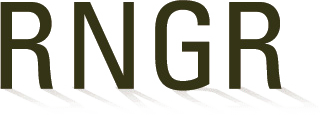
Achillea (millefolium)
|
Mark E. Majerus USDA NRCS - Bridger Plant Materials Center 99 South River Road, Rte. 2, Box 1189 Bridger, Montana 59014-9718 (406) 662-3579 (406) 662-3428 (fax) mmajerus@mt.nrcs.usda.gov http://plant-materials.nrcs.usda.gov/mtpmc |
|
| Family Scientific Name: | Asteraceae | ||
|---|---|---|---|
| Family Common Name: | Aster family | ||
| Scientific Name: | Achillea millefolium | ||
| Common Name: | Common yarrow | ||
| Species Code: | ACMI2 | ||
| Ecotype: | See | ||
| General Distribution: | Circumboreal distribution throughout North America, and in Asia and Europe; plains and mountain valleys. | ||
| Propagation Goal: | seeds | ||
| Propagation Method: | seed | ||
| ProductType: | Propagules (seeds, cuttings, poles, etc.) | ||
| Time To Grow: | 0 | ||
| Target Specifications: | Harvest yields vary due to weather and age of stand. Average annual production is 41.3 kg/ha (36.8 lb/ac). | ||
| Propagule Collection: |
Wildland collection occurs mid August to mid September when the white inflorescence has turned almost completely brown and yet has a slight salt-and-pepper appearance. The flat achene is gray with white, narrow, papery wings, and not yet shattering (natural dispersal)from the cyme; easily hand-harvested by cutting the entire seedhead. One collection hour/person will yield an average 138.3 grams (4.9 oz) clean seed (ranged 39 to 266 grams and varies by year, stand density, and collector experience). |
||
| Propagule Processing: |
Seed Processing: Seed is spread out on a tarp in a dry, sheltered environment and turned daily for approximately 3-5 days, until no moisture or warmth is detected. After drying, material is processed with a Wintersteiger plot combine at concave closed, speed 700 rpm, and no wind. Seed is threshed with a hammermill through a 4/64" round hole screen, air-screen processed on a Clipper M2B or Eclipse cleaner over a 1-21" round hole screen with low wind, and then over a 6x30 wire mesh screen (0.0203" x 0.1471") to remove very fine debris. Due to tiny seed, abundance of floral chaff, and moderate seed flow, this species is moderately easy to clean. Larger seed lots are processed most efficiently with mechanized cleaning equipment and smaller seed lots usually require more hand labor. Seed/Kg: 6,600,000. Germination: 97%. Purity: 100%. |
||
| Pre-Planting Treatments: | Seed Treatments: seeds placed in 0-1§C (32-34§F) for a 10-day cold stratification treatment and then exposed to 22-25§C (72-77§F). | ||
| Growing Area Preparation/ Annual Practices for Perennial Crops: |
Propagation Environment: Seedbed is firm and free of weeds with good field moisture to 4" depth. Seed Propagation Method: Direct seeding. |
||
| Establishment Phase: |
Sowing Date: Spring. Sowing/Planting Technique: 25-30 pure live seed/ft. (0.3 m) row, irrigated 91cm (36 in) row spacing, seeded with 2-row double-disk planter with depth bands, optimum seeding depth 0.6 cm (0.25 in). Establishment Phase:Soil surface is kept moist throughout the 14 day germination and emergence period - approximately 3-4 light applications per week (also helps prevent soil crusting). Fertilizer application is not recommended the first year, as it generally stimulates weed growth and competition. |
||
| Length of Establishment Phase: | 2 growing seasons. | ||
| Active Growth Phase: |
Rapid Growth Phase: Spring to fall; PlateauT herbicide is recommended for control of broadleaf weeds and application must occur pre-emergence or post-emergence prior to bolting, budding, or bloomset of wildflower crop; soil moisture is critical during budding stage, after anthesis, and post harvest to pre-freezeup -no irrigation is applied during flowering (pollination); fertilizer is broadcast at 100 lbs actual N/40 lbs actual P/acre in mid-September. |
||
| Length of Active Growth Phase: | 2 to 3 growing seasons. | ||
| Hardening Phase: | N/A. | ||
| Harvesting, Storage and Shipping: |
Harvest Date: Cultivated harvest occurs mid July to mid August, with a mean harvest date of August 1 at the Bridger Plant Materials Center. A temporary "diaper"- a heavy piece of plastic or canvas clipped under belt draper - is attached on a John Deer swather for direct catchment to minimize seed loss. Seed Storage: Seed is placed in plastic ziplock bags (seed is so small it may sneak out of paper containers), repeatedly punctured to prevent moisture buildup, placed in cloth or plastic seed sacks, and stored in a cool, dry environment. Seed Dormancy: Seed is classified as nondormant. |
||
| Length of Storage: | <b>Storage Duration:</b> 5-7 years. | ||
| Other Comments: | Ecotype: 6 different Glacier National Park accessions periodically collected and produced in 1991, and from 1997 to 1999. Elevation ranges 991 m to 1,378 m (3,251 ft to 4,520 ft). | ||
| References: |
Flora of the Pacific Northwest, C. L. Hitchcock and A. Cronquist, University of Washington Press, 1973. Seeds: Ecology, Biogeography, and Evolution of Dormancy and Germination, C. C. Baskin and J. M. Baskin, Academic Press, 2001. |
||
Citation:
Winslow, Susan R.. 2002. Propagation protocol for production of Propagules (seeds, cuttings, poles, etc.) Achillea millefolium seeds USDA NRCS - Bridger Plant Materials Center Bridger, Montana. In: Native Plant Network. URL: https://NativePlantNetwork.org (accessed 2025/11/02). US Department of Agriculture, Forest Service, National Center for Reforestation, Nurseries, and Genetic Resources.



